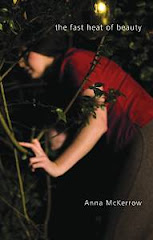
The ICA’s current exhibition Poor.Old.Tired.Horse is an interesting one for poetry lovers and anyone interested in text and art crossovers. It:
"takes an expansive look at text-based art practices, inspired by the concrete poetry movement of the 60s which explored both the literary and graphic potential of language." ICA website
Concrete poetry, for anyone unsure, is poetry that explores the typographical arrangement of words as well as the meaning, rhythm or rhyme of those words. It also uses typography in part to comment on the fundamental instability of language – or the inability of language to adequately express an object. One of my favourite examples is Eugen Gomringer’s Silencio, which shows the ironic inadequacy of the word “silence” to express silence, but which also features an authentically silent space in the middle of the words. Arguably, blank space to express silence could possibly be the best relationship of concept to representation/language I can think of. Which is somewhat depressing, as a poet, to be honest.
"takes an expansive look at text-based art practices, inspired by the concrete poetry movement of the 60s which explored both the literary and graphic potential of language." ICA website
Concrete poetry, for anyone unsure, is poetry that explores the typographical arrangement of words as well as the meaning, rhythm or rhyme of those words. It also uses typography in part to comment on the fundamental instability of language – or the inability of language to adequately express an object. One of my favourite examples is Eugen Gomringer’s Silencio, which shows the ironic inadequacy of the word “silence” to express silence, but which also features an authentically silent space in the middle of the words. Arguably, blank space to express silence could possibly be the best relationship of concept to representation/language I can think of. Which is somewhat depressing, as a poet, to be honest.
Anyway, if interested, I would recommend checking out Mike Garofalo’s Garden Digest website
for lots of other interesting examples of visual and concrete poetry.
As far as Poor.Old.Tired.Horse goes, I hope that it reminds the world at large that this language we use is less a usefully transparent system of tags and more a bizarrely symbolic development of evolved grunting which has only a tenuous relationship to the real world. I’m sad that (according to the ICA) “most people have forgotten concrete poetry”, because it remains a philosophically important mode of questioning language itself; a valuable approach, especially in these days of scarily-approaching-Orwellian-doublespeak. I really feel like we are about two months away from the instigation of the Ministry of Love most of the time. And in all seriousness, political language is a really great example of the sheer unrepresentative nature of language to reality. I always think political language is the art of understatement and translation – rioting bloodbath becomes regrettable event, screaming dying thrashing becomes multiple fatality, fucked banking mismanagement and mammon-worship is a recession. Which suggests gently receding, like the hair of the people who wrote this particular dictionary of perverted mildness.
Although I am a poet (note: I wrote “post” then – interesting Royal Mail-oriented/self-as-blogpost slip, what could it mean, what could it mean?) and therefore engaged in the pursuit of sparking associations and meaning via juxtaposition and imagery in the mind of the reader, I am under no illusion that conventional poetry can ever really interrogate reality at the level of reality – it can, however, represent a stylised version of possibility which may well have an impact on the reader.
So therefore, in these conventional days of poetry that tends to rely on describing things in frequently boring ways, it is good to remember that there are artists who were and are working at a more symbolic level.
I am a post.
(silence)





